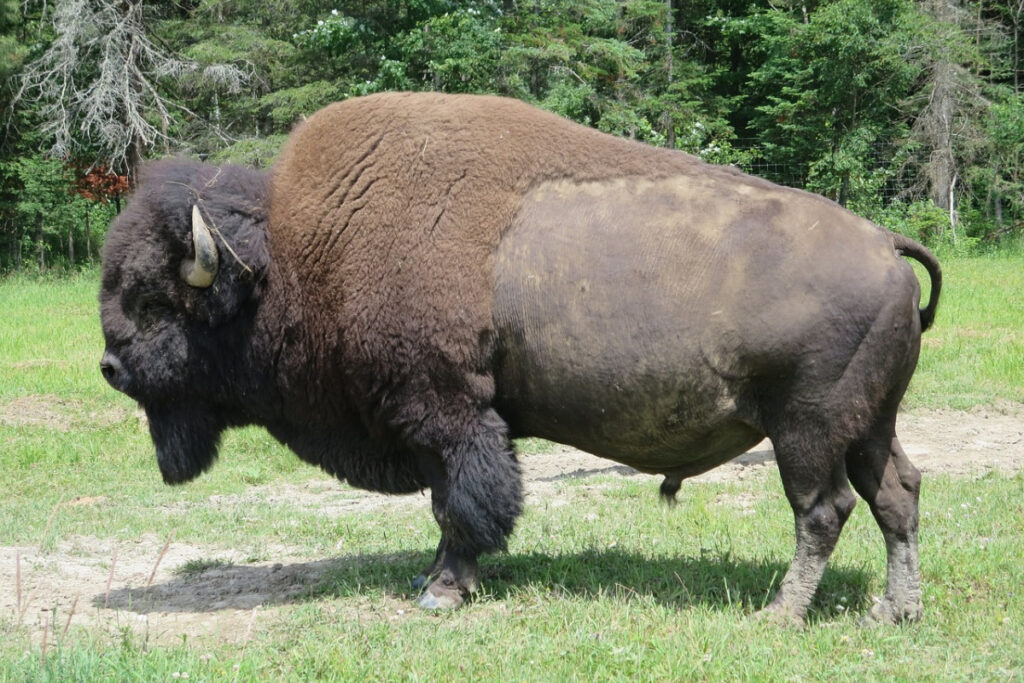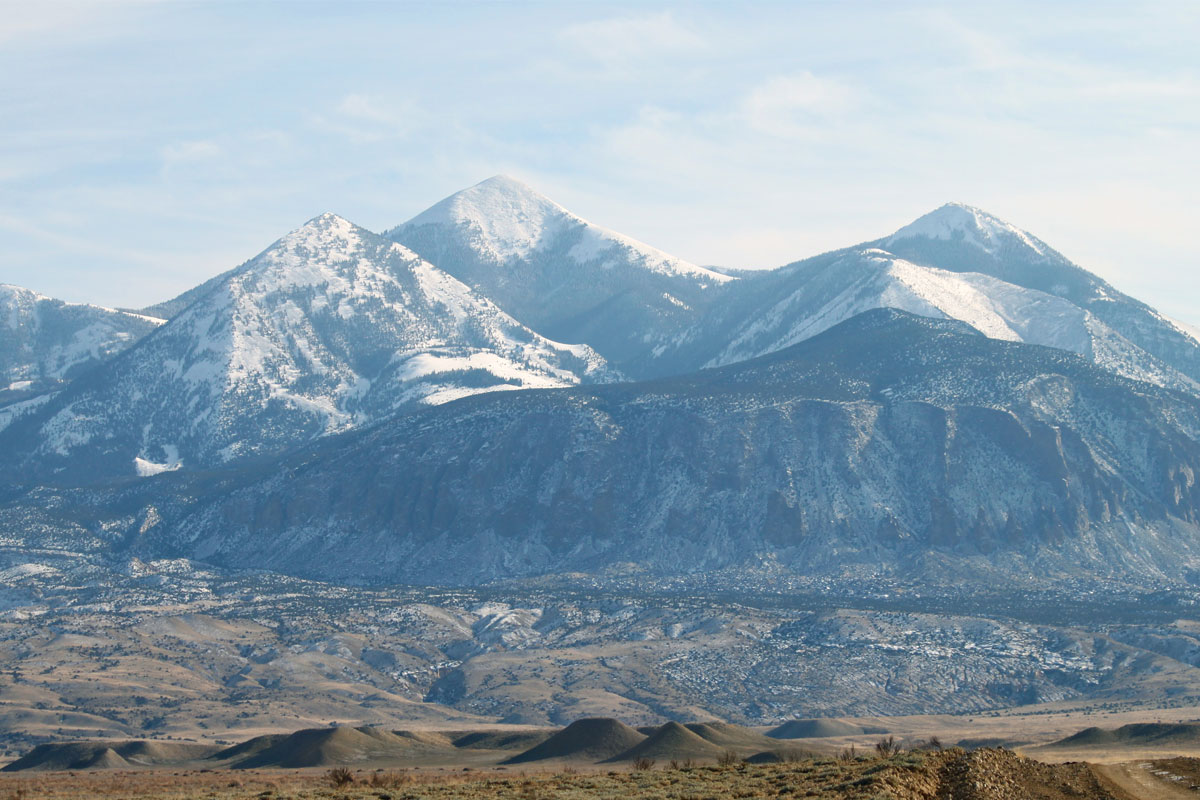
Utah’s Henry Mountains is home to one of only a handful of genetically pure blood free roaming American Bison herds found on North American public lands. Once numbering in the millions, free-roaming bison have been reduced to a few thousand in herds located in Yellowstone National Park, Wind Cave National Park South Dakota, Theodore Roosevelt National Park North Dakota, Blue Mounds State Park Minnesota, and Elk Island National Parlk Alberta Canada. With between 250 and 400 bison at any given time, the Henry Mountains herd is one of two managed bison herds in Utah, the other located on Antelope Island at the Great Salt Lake.
Through the collaborative efforts of several public and private entities, 18 bison from the Yellowstone Park herd were released in 1941 near Robbers Roost Ranch north of the Dirty Devil River. Their habitat encompasses primarily public lands on and very near the Henry Mountains, generally ranging from Blue Bench on the north to Eggnog on the south, and Coyote Bench on the east to Notom Road on the west.

At one time, there were as many as 50 million bison roaming in North America, but they were hunted to near extinction by the end of the 1800s, with the exception of the Yellowstone Park herd. Following the initial 18 bison in 1941, five more were added to the herd near the Dirty Devil. They eventually moved themselves to grasslands near the Henry Mountains and eventually into the mountain range itself. In the mid-1960s, the population had grown to include about 80 bison. The prairie grasslands, alpine meadows, and even desert scrub have proved to be ideal environments for the bison to thrive, and they have stayed there ever since.
While the terms buffalo and bison are often used interchangeably, it’s bison that are native to North America. The Henry Mountains bison have shaggy coats that shed during summer, stocky legs, and shorter horns. Their habitat is typically open grasslands or desert lowlands, and they often graze on gently sloped mountains and hillsides (with two major grazing areas). Although bison aren’t typically high-altitude animals, the Henry Mountains herd can be found grazing up at all elevations, ranging from 4,800 feet to the 11,500-foot peak at Mt. Ellen.
The Henry Mountains bison are genetically pure, with no evidence of crossbreeding with cattle, unlike other bison herds. In fact, this herd is particularly healthy, with a high natural survival rate and very few natural predators. The biggest issue to date has been competition with local livestock for grazing, so limited hunting is permitted by special license in order to control the population. It is the only hunt-able free roaming heard in the U.S. Although the mountain is capable of supporting up to 400 bison, the state of Utah tries to keep the population around 325. Recent population control efforts also include transplanting excess bison to the Book Cliffs, about 100 miles north of the Henry Mountains near Green River Utah.
Roamers by nature, the Henry Mountain bison often cover distances of 20 miles a day. You might spy these elusive creatures along the road or kicking up dust in the distance. And if you do, consider yourself lucky. They typically hang out at higher elevations in the spring and summer, then migrate to the lower, western side of the mountain range in fall and winter. The bison tend to graze at dusk and dawn, and rest during the day. They usually breed in summertime and give birth in the late spring to early summer and that’s usually the best time to spot them. Some of the best areas to look for the bison are Swap Mesa in the winter, Cave Flat/Airplane Springs in the early spring, and Star Flat/Burned Ridge in the early summer. Keep in mind that these animals are truly wild, weighing as much as a ton and capable of running 35 miles per hour, so view them from a safe distance.
Hanksville and Caineville make a great base for exploring the Henry Mountains. Hanksville is located at the junction of Highway 24 and Highway 95, both are scenic byways. The west access to the Henry Mountains is best if you are coming from Capitol Reef National Park. For more information about the Henry Mountains bison herd, contact the Hanksville BLM office. Read more about the Henry Mountains here.
Keep Capitol Reef Country Forever Mighty
What is Forever Mighty? It’s practicing responsible travel while visiting Utah and Capitol Reef Country by following the principles of Tread Lightly and Leave No Trace.
Plan ahead and prepare, travel and camp on durable surfaces, dispose of waste properly, leave what you find, minimize campfire impacts, respect wildlife, be considerate of others, support local business and honor community, history and heritage. Help us keep Utah and Capitol Reef Country’s outdoor recreation areas beautiful, healthy, and accessible.
